How Blue Is My Valley Read online
Page 8
‘No,’ I say, suitably shocked. I am pleased that my ramoneur realises that I am a person from Wales, who has clearly not become rich, whether by selling a house or in any other way.
We shake our heads at the strange ways of Londoners, Parisians ... mad capitalists, all of them. I fail to mention that my sister has just become a Pyrenean, not the big white hairy kind who share my life, but the mad-Londoner-moving-to-France-kind, possibly one of seventy moving into her village. Smug thought, compensating much for Welsh house prices.
By this time the water torture is dripping to its last drops and Monsieur Silvestre is reading aloud the magnetic words on the huge American fridge-freezer which we bought during the famous heatwave and which looks as if it landed in the kitchen after a failed attempt on Mars.
Inspired by a metallic surface the size of a small shed, a daughter presented us with a complete set of magnetic French words to motivate us in our grammar practice. Instead I had played around with some lines of vaguely erotic poetry.
This seemed less entertaining when read aloud, slowly, lingeringly, by a chimney sweep prone to asking what the phrases meant. Even he tailed into silence before the last lines as I stuttered that they were not meant literally and that my French wasn’t very good. The dregs were finally drained and John re-appeared to shake hands and accept a cheerful invitation to look at inserts with our ramoneur; he would ring us when had found some suitably attractive fires to set into our small chimney-breast.
This was not our first offer of guided shopping. We have already visited a granite factory, taken there by our kitchen designer so we could judge for ourselves whether we wanted to spend more arms and legs than we possess on worktops that could double up as gravestones.
The granite showroom displayed samples of the stone like works of art, each hung separately to catch the light and we discovered quickly that we didn’t like blue granite. If you were told the price of blue granite, you wouldn’t like it either. The blues and grays are the most expensive, with price further determined by the markings, those cosmic swirls like frozen fire.
Pragmatically, we asked to see only the cheapest and there was no hint of patronage in response. We were treated to the same enthusiastic discussion of the pros and cons of different blocks of stone, touring the yard to look at the raw hunks... and to touch it.
My sample of granite is a marvel to me. It is 14mm thick, glints even on the raw sides and the polished facet holds all the secrets of time and stonecraft shifting in it shine. How can anyone hold cut stone without feeling awe? How is it got? How is it cut?
When I asked some of these questions I was invited to come and watch the granite being cut; Monsieur Laques, the kitchen designer, would bring me. I am not sure whether these offers are meant to be taken up but I would love to see the cutting tool, heavy enough and yet precise enough – presumably with diamonds – that can turn the bedrock of our world into pretty furniture.
I have always been fascinated by skilled craft and I treasure all those moments when someone has shared a knowledge – and a passion – regardless of how much money I might have available to spend (and it was never much).
These treats have included the lyrical account of the rivers Towe and Cothi, along with some very practical advice given me by the man who sold me my first fishing rod; the engraving skills of Mr Tripp at Tripp’s trophies, who created badges for me from schoolchildren’s designs; an artist’s construction of a rainforest from scraps and knitted strings; and the time I chose a diamond.
There is in Llanelli an old family firm of jewellers with a good Jewish name and when I was sent in there to buy myself a simple, small diamond pendant for an anniversary present, I didn’t expect to be treated like a princess.
Lawrence is the diamond expert, so much so that he spends most of the week at Hatton Garden, but he happened to be there and so was summoned by the magic word ‘diamond.’ When I told him what I wanted, he thought he had ‘just the diamond for me’ in London and would bring it back for me to see.
A week later, I was shown two diamonds and made my choice, directed to look at the cut, the colour, the light... I could not have been given more attention if I were replacing my crown jewels, and yet I was not made to feel stupid in my ignorance or let down by my choice. This is the gift of the true craft master; to communicate the knowledge and the passion, a true teacher.
More and more, I realise how badly educated I have been and every French person I meet is only too willing to remedy this. I have not been taught how to store my saucisson? I must hang it and only cut off what I need as I use it.
My stallholder from Haute-Savoie asks if I am from round here; I am, I am proud to declare. In that case he tells me, you must wrap your mountain cheese in a damp tea-towel and it will keep for months. He has already tempted me to his stall with tidbits of saucisson and mountain cheese which shouts of cows and calories and tastes of Heidi recovering all the bloom in her cheeks.
I wonder what he would have told me to do with my cheese if I had said I didn’t live here but I daren’t ask – he is already giving me more advice. Never, never, never put your saucisson or your cheese in the fridge. I feel guilty. I have treated my produce cruelly. I blame my mother. Why didn’t she teach me this – and tell me important things like not to hold an orange pumpkin against a cream jumper when I was peeling it. She could have told me how to preserve kiwifruit rather than my virginity – far more useful.
In late November we catch up on rain, getting five months’ annual rainfall in three days. The 24hour satellite weather channel brings non-stop photographs of cars swimming along swollen rivers and the pompiers at work and if we look out the window, we can watch our own personal river flowing down the paved terrace.
The pets are not impressed; they did not leave Wales for this. Villages twenty minutes drive from here are cut off, their drinking water filthy with mud. The photographs of people queuing for bottled water, from the Red Cross, are no longer of Iraq but of the Ardèche. We have a few drips into the attic but I am proud of the house; it has survived red alert extreme weather conditions. As the floods subside and the rain turns to drizzle, we are restless and what better treat than a food event?
Montélimar offers us a Salon de Gastronomie and we have the excuse that Christmas is coming and so we can indulge (I am Welsh/Scottish/English– I need an excuse to buy expensive food). I am surrounded by over forty hand-picked artisans, experts in a particular food – or drink.
I lose sight of John while I discuss fish soup with the wife of the fisherman; he fishes near Narbonne, she does the cooking and bottling. I don’t like fish soup; I taste it. I love fish soup. I had no idea that fish soup should taste like this.
It is the same at every stall. John finds me again and he wants me to try the snail salmi, a sort of pâté. Snail salmi? Yes, with either parsley or roquefort flavouring. Not only do I follow suit and sample the salmi, we buy salmi and the snails themselves, stuffed with parsleyed, garlic butter.
There are tables set out everywhere canteen-style, so we can sit and taste at leisure, discuss properly the merits of the hams, olive oils, wines ... It is normal, it is expected that you ask, ‘What would you do with that? How would you cook it? What would you serve with it?’
Encouraged by this, we buy dried aubergine strips, lavender vinegar and truffle oil – from one of only four top-award-holder vinegar producers, honoured even in the USA (we are shown the trophy and the news articles). On home ground, I taste local beer, am bemused by the trendy white beers, the ‘blonde’ and the blanche’ which are all lagers to me.
The brewer demurs at my request to taste his Christmas special but then he says, ‘You are English - only an English person would be willing to drink beer at that temperature, not chilled’. He has run out of properly chilled Christmas special and at last I am given something like beer, at the correct temperature.
Even the Christmas special is a light beer to me and the brewer laughs at me, inviting me to visit his brew
ery where I can taste another beer, more like the Irish – my mouth waters at the thought of Guinness. I am assured we will be welcome. I will take my son around a small French brewery and afterwards we will sit in the sun, drinking dreams in bottles.
I inspect the bottled Picodon in oil, reminded of The Project, and realise I should have cut the cheeses into pieces and that their retrieval from my jars is going to be an entertainment for all the family ... and these ones do not look like old Picodons. Far from being bottled shoeleather these look like young tender morsels. A week to go before I unstopper my gastronomic delights and I don’t hold out much hope of them being edible.
Perhaps next year I’ll try orange liqueur. I turn my attention back to the potted meat specialist. We buy bottled cassoulet and tins of pâté in strings, regretfully decide against a whole ham, postpone our buying of nougat, Montélimar’s finest... enough.
We haul our catch to the car. I chatter all the way, telling John that we can take the oil bottles into the shop and get them refilled, as if this will compensate for the extravagance he does not accuse me of – it is my Calvinist upbringing at work again. Not a Calvinist soul though; if a soul can pig out, mine is going to.
7.
Kiwis in Provence
The hare has retreated from the orchard to the deeper cover of the woods, the finches and tits are fighting over the sunflower seeds spilt from the bird feeders and we have seen two deer racing past our bedroom window.
It is winter and the wild creatures take greater risks, choosing between the hunger and the humans. The wild boar are no longer a glimpse in the distance; the furrows churned in the orchard are signs of our regular night visitors. Determined to see them close up, I sneak out with a torch at bedtime, like Winnie-the-Pooh hunting hephalumps, and on Boxing Day I am rewarded with the most amazing squeaking grunting troughing which evades my torchlight and diminishes to multiple crunchings up near the woods, where I am not brave enough to go.
I have not been able to talk John into these nocturnal boar-hunts but when I have actually caught the digging piggers in action, he joins me in time to confirm that yes, there is something munching out there. Serenaded by pigs, we star-gaze, the clear skies rivalled by the flashing Christmas lights that outline a villa up the hill.
In the morning we inspect the craters, bemused that our visitors charge straight through a whole truffle oak plantation to root around our lawn, which is innocent of even an acorn. We are still more amazed at having wild boar as neighbours than depressed at the damage they cause; this might not last. Already, when I hear the crack of a shotgun in the woods, I contemplate roast boar.
I have some affinity with clumsy beasts that charge around enthusiastically causing accidental havoc or I would never have chosen Pyreneans as pets. Their latest natural disaster adds realism to my nativity scene. Over the last two years I have collected a few Provençal ‘santons’, the pottery peasant figures which extend the traditional nativity scene to include the poet Mistral and other set characters.
There is a view that Jesus Christ was actually born in Provence. How widely this view is supported outside Provence I don’t know, but you only have to take one look at Joseph, in his striped shirt, hurling his beret in the air as he tells the boys that he’s a father, to see he’s not a traditional Jew.
We started with the basics – the donkey, the ox, Gabriel (Mary, Joseph and the baby were included with these more important characters) – and we’ve added walk-on peasants. My Christmas present this year included two camels, one allegedly a ‘racing’ variety (I wonder what I’ll get next year? Let me see, how many kings are there again ...) and all was looking homely in the stable when disaster struck.
A Pyrenean earthquake hit the foundations of Provençal Bethlehem, snapped a table leg completely, and caused multiple casualties. Mary, an old peasant lady and a shepherd were decapitated and the stable roof was destroyed. The scene now looks more like modern Bethlehem after a suicide bombing; heads slightly askew after amateur first aid (with the sort of glue ‘guaranteed to hold car parts together’) and a cracked roof with missing tiles. At least the camels survived intact.
Santon fever hits public places as well as homes and Super-U sports a particularly tacky crèche with peasants of varying sizes and blunt, bashed faces. Dieulefit’s main church has a display so spectacular, and so odd, that it makes it into the regional newspaper.
Our santon designer is clearly expected to produce ever more startling displays each year and so has chosen a Chinese theme. It is certainly different, displaying kimonoed ladies under paper parasols who adore the infant in the stable while clay children fly a well-tensioned kite beside the paddy field, in which each blade is hand-painted green paper. Chinese and Japanese elements mix with the traditional stable scenario, complete with Chinese Mary and Joseph and the message that Christ is everywhere.
The effect is strange. I try to imagine a Provençal Buddha and fail. Or Provençal Ramadan? And yet multi-cultural France is at the forefront of the news. There is even a serious debate in the French woman’s magazine, amongst the Christmas recipes and fashions (for the part of the three hour wait at Paris Charles de Gaulles airport that I am not reading about Picodons). The Editorial sets out the case for the recent controversial proposal for a law banning ‘ostensible signs of religion in public places’.
The views from the UK are clear, relayed to me by our Christmas visitors. The French are racist nutters, about to persecute non-Christians, particularly Moslems, by preventing them wearing traditional headscarves to work or to school. The picture in France is far more complex.
There is a petition in my magazine, signed by France’s female great and good – and France has at least its share of remarkable women – supporting the law, on the grounds that women’s rights are denied to those within certain religious sub-groups and that this is symbolised by clothing rules enforced on women. French Muslims are among those who signed the petition and among those who respond to the magazine’s questionnaire, supporting the ban. Discussion turns around France’s tradition of ‘laïcité’, which, like Germany’s, holds that the state is secular and religious principles are private. Conversely, the UK has laws based on Christian principles and has extended this to include other religious views.
Arguably, the UK discriminates against atheists, starting with its requirement that the Head of State be Head of the Church of England and influencing organisations right down to the legal requirement that all state schools have ‘a broadly Christian act of worship daily.’ You ask any atheist Headteacher how she, or he, feels about this requirement – I can tell you from personal experience.
On the other hand, the French political position is untenable to a religious person, for whom her religion is part of her life, not an add-on. It is interesting that at least one version of the Jewish faith attempts to prevent conflict by actually stating that the law of the land shall take precedence over religious observances.
The debate in France has arisen because of the perception that religious differences are increasingly leading to violence. The government’s argument is that ‘ostensible signs of religion’ provoke hostility, so if you get rid of the clothes differences, people will get on better with each other. Theoretically this is all very interesting but which poor buggers are actually going to make a woman take off her headscarf? The police? The Deputy Headteachers? What is the punishment to be?
A declaration of war is always a rallying call to take sides; only the press releases of politicians suggest that it is likely to reduce tension. Knowing I’m not allowed to, would be enough to make me want to wear a headscarf. We immigrants have to stick together.
Visiting season is in full swing. Daughter-turned-kiwi is home for the first time after emigration and is un-phased by home having changed country. We play a gentle one-up-womanship; New Zealand has mountains, blue skies, fresh seasonal produce and empty roads.
One of our days out includes vultures circling the Rocher du Caire, wheeling aroun
d the grand cliffs like a squadron of Valkyries. The only winter visitors, in a village closed for the season, we are given a kind coffee in the tiny tourist office. We are stopped by shepherds on a mountain road and watch a herd moving down from the mountains to the low pastures in the old tradition of transhumance.
Amazingly, the herd is led by what must surely be one of the rarest creatures in the world, a working Pyrenean – although I note the collie weaving constantly from side to side, gathering stragglers, while the Pyrenean looks cheerful and walks at the head. For the record, a very cheerful Pyrenean holds its tail in an arc, known in dog circles (!) as ‘doing the wheel’. I am told that New Zealand has the transhumance too, with hundreds of flocks crossing the country roads; there are also miles of unspoilt beaches, penguins and sea-lions. I am defeated.
Then we cook together again, my lovely girl and I, and I realise how stupid I am. Together in Provence, on holiday four years ago, we cooked the best pissaladière ever made and now we peel langoustines for the paella that, with the crèmes that we took turns in caramelising, will be part of this Christmas for both of us. Neither France nor I need to impress but rather just to offer what we are. I am the richer for having a home from home in New Zealand, with unspoilt beaches, penguins and sea-lions, and I see it all in my imagination.
We compare notes on immigration laws; New Zealand is so strictly against the import of foreign bacteria that foodstuffs can be taken back there only in sealed containers and our visitors will clean their walking boots with a tooth-brush to ensure that the boots are allowed back into the country. We also compare notes on house-buying and maintenance, and I am reassured to hear about their woodworm, that wake up annually to fly around the corner of a room on Christmas day and then return to the floorboards for the rest of the year. As daughter and partner, like all kiwis, live in an all-wooden house, they were panic-stricken and called in the New Zealand beetle expert, who was not impressed and told them to call him back if it spread a lot.

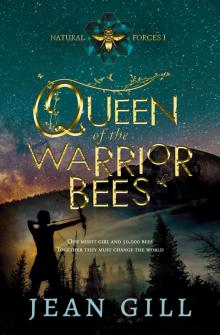 Queen of the Warrior Bees
Queen of the Warrior Bees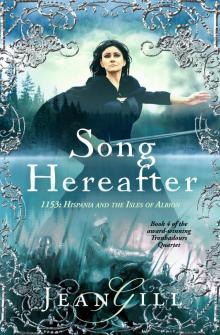 Song Hereafter
Song Hereafter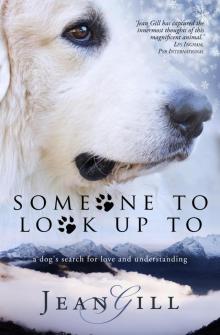 Someone to Look Up To
Someone to Look Up To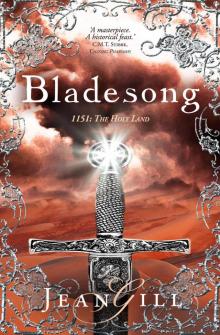 Bladesong
Bladesong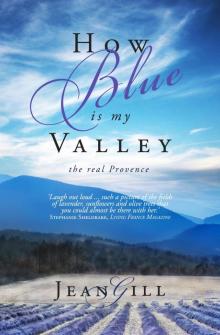 How Blue Is My Valley
How Blue Is My Valley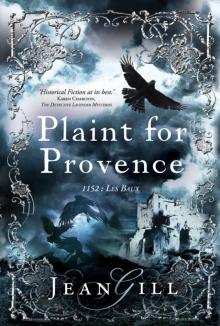 Plaint for Provence
Plaint for Provence Song at Dawn: 1150 in Provence (The Troubadours Quartet)
Song at Dawn: 1150 in Provence (The Troubadours Quartet)